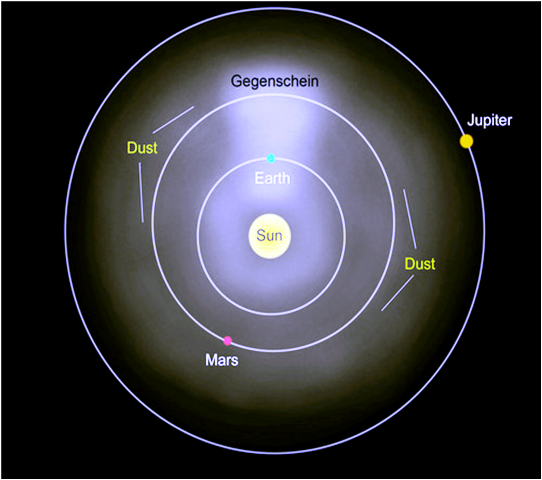
Milankovitch Cycles
Resilient Earth
For millions of years, Earth’s climate has been governed by cycles of long periods of increased glaciation followed by short “inter-glacial” periods of melting and warming. Presently, humans are enjoying a naturally warmer inter-glacial period, and have been able to build a global high tech civilisation thanks to the longer growing seasons and the higher CO2 levels that result from natural ocean warming. But what drives this great cyclic phenomenon — besides variations in orbits around the sun and variations in solar intensity / sunspots?

Modulation of Ice Ages via Precession and Dust-Albedo Feedbacks
via WUWT
Interlocking Feedback Cycles More Plausible Drivers of Cyclic Climate Change
Why do ice ages occur? Surprisingly, even after many decades of paleoclimatic research we simply do not know for sure. Most scientists will agree that ice age cycles have something to do with precession: the slow wobble of the axis of the Earth. The ancient Egyptians and Greeks knew of precession and called it the Great Year, because it gives warm and cool seasons over its approximate 23,000-year cycle. But there is a problem with invoking the Great Year as the regulator of ice ages, because we should really get an interglacial warming every 23,000 years or so. And we don’t – they only happen every fourth or fifth Great Year. __ Ralph Ellis quoted in WUWT
The authors of a new scientific paper suggest that complex interlocking feedback cycles involving ice sheets, low CO2 levels, and desertification / great dust bowls, have much more to do with cyclic climate change than the chimerical boogey-man of anthropogenic carbon. More on this new intriguing theory:
It begins when a Great Summer turns into a Great Winter, which reduces the sun-strength in the northern hemisphere and allows ice sheets to grow. This is a slow process that takes tens of thousands of years, and appears destined to turn the world into a complete snowball. However, the high albedo polar ice sheets have an Achilles heel – dust. As the ice sheets grow and the seas cool, CO2 also reduces. The concentration finally reaches the critical 190 ppm level where world flora begins to die, especially at higher altitude, and the Gobi steppe-lands turn into a true sand desert. This turns northern China into the equivalent of 1930s Dust Bowl America, and the ensuing dust storms dump thousands of tonnes of dust onto the northern ice sheets each year. And so when the next Great Summer comes along, the dusty polar ice sheets can warm and melt and the next interglacial is born. So CO2 can indeed cause global warming but its effect is much more pronounced at low concentrations, rather than high concentrations. ___ More with links and sources at WUWT
The interlocked feedbacks incorporated into the above theory fit together well — unlike the doomeresque unbounded positive feedback computer projections of climate apocalypse alarmists in government, media, academia, and big money activist organisations. The idea that low CO2 levels — leading to desertification, dust bowls, melting of large ice sheets, and an eventual return to “summer” (inter-glacials) — plays a far more active role in climate change over the eons than do “high CO2 levels”, which are generally a passive result of naturally warming oceans giving up dissolved CO2, is a particularly jarring concept for most conventional moderns.
There is a lot more to this complex story, of course. But using historical perspective to work out the drivers of natural cyclic climate change is a productive approach to breaking out of the intentionally insular, cult-like alarmism of mainstream “climate science.”
As we learn more about the many complex interactions that generate Earth’s ever-changing climate, we should at least grow more humble regarding our abilities to predict long-term global climates beyond vague generalities. The modern cult of climate apocalypse that has taken over governments, universities, big media outlets, wealthy faux environmental activist groups, and other political activist organisations, is an excellent example of the arrogant stupidity of humans who are in dire need of something important to do.
More:
Maximise global food production through intentional raising of CO2 levels
Natural orbital cycles:
Milankovitch cycles … and …
… the natural angle of Earth’s orbit around the sun with the “dust and debris-filled plane” of the ecliptic.

Angle of Earth’s Orbit to Ecliptic
http://oilprice.com/Energy/Energy-General/The-Natural-Chaos-Of-Climate.html
Solar heat and energy absorption by Earth’s oceans also vary based upon the position of Earth in relationship to the energy-blocking effects of ecliptic dust and debris.
All of these orbital cycles — the three Milankovitch cycles and the orbital position within the ecliptic — inject chaotic variations into global energy absorption from the sun. Throw in the chaotic variation of solar energy output caused by gravitational interaction with the larger planets, and chaos reigns in Earth’s natural climate variation.


Several years ago I read another article about this very problem that also made a point that the regular cycle of ice ages did not really get started until the Panama isthmus connecting North and South America formed, blocking the exchange of warm water between the Pacific and Atlantic Oceans. This caused a larger imbalance in the planetary distribution of the global heat balance.
It was not considered a prime cause, but a highly important secondary factor.
Yes. A less balanced system is more easily upset by outside perturbations, such as the four known important orbital cycles (Milankovitch plus the Earth wandering in and out of the dusty plane of the ecliptic), a variable sun, and even galactic cosmic rays.
There is some debate about when the continents “hooked up,” but it seems plausible that such a disruption in global heat flows would lead to significant climate change.
Pingback: Best of the Blogroll – ÆtherCzar